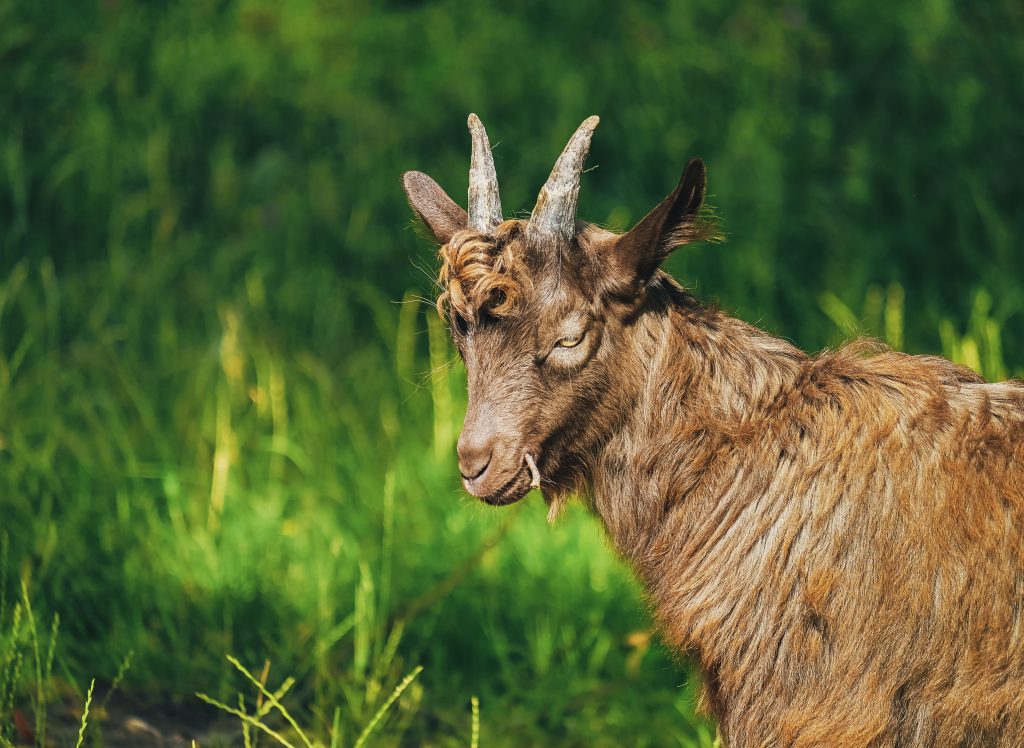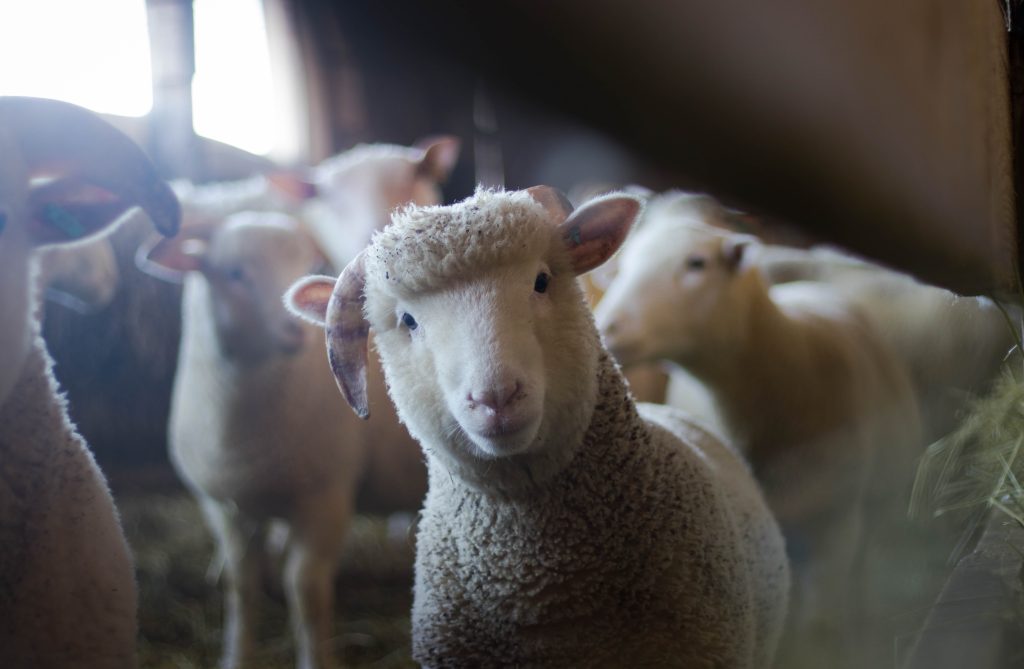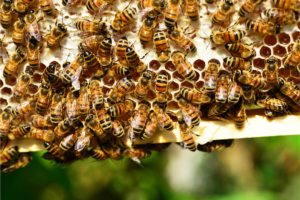One of the earliest animals that humans domesticated was the goat, which was herded 9,000 years ago.
Goats may be trained to respond to their name and to being called. This read is going to take you through the difference between goat and sheep.
The stimulating effects of coffee were discovered, according to an Ethiopian legend, when a goat herder noticed that his flock was more animated after eating the red berries of the coffee plant. The plant had a similar invigorating effect on the herder, and as a result, the custom of drinking coffee is said to have originated from goats.
Sheep are very emotional creatures. Similar to humans, sheep are able to feel a variety of emotions. Numerous investigations have shown that sheep are capable of feeling fear, anger, boredom, sadness, and happiness. Sheep are capable of feeling more complicated emotions as well as fundamental ones, including connections between emotions and cognition. For instance, scientific research has revealed that sheep may be both pessimists and optimists, believe it or not! They are even able to recognize human faces!
Highlights
- What is a goat?
- What is a sheep?
- Properties of a goat
- Properties of a sheep
- Similarities between a goat and a sheep
- Tabular difference between goat and sheep
- The bottom line
What is a goat?

A domesticated species of goat-antelope that is often maintained as livestock is the goat, also known as (Capra hircus). The goat is closely linked to the sheep since it belongs to the tribe Caprini and the animal family Bovidae. Goats come in more than 300 different breeds.
All around the world, goats are utilized for their milk, meat, fur, and skin. They are social creatures and are recognized for their unique bleats. There are goats all over the world, and they have been domesticated for a very long time. They are tough creatures that can survive in harsh conditions like deserts and steep terrain.
Doe or nannies are terms used to describe female goats, Both male and female young goats are referred to as kids, whereas intact males are referred to as bucks or billies. Wethers are castrated males . While the term “hircine” is frequently used to highlight the distinctive odor of domestic goats.
Scientific classification of goat
- Kingdom: Animalia
- Phylum: Chordata
- Class: Mammalia
- Order: Artiodactyla
- Family: Bovidae
- Subfamily: Caprinae
- Tribe: Caprini
- Genus: Capra
- Species: C. hircus
Capra hircus is its binomial name.
What is a sheep?

The Bovidae family of domesticated mammals includes sheep, which are often raised as livestock for their wool, meat, and milk. They are social creatures that frequently live in herds. Sheep are well renowned for their calm demeanor and may be identified by their thick wool coats, curled tails, and distinctive baaing noises.
Read also: Difference between ruminant and non ruminant animals
They have been domesticated for thousands of years, making them one of the first creatures to be maintained by humans. They may be found all over the world, including Europe, Asia, and Australia.
A young sheep is referred to as a lamb, a castrated male as a wether, an adult female as a ewe, and an intact male as a ram or, less frequently, a tup.
Scientific classification of sheep
- Kingdom:Animalia
- Phylum:Chordata
- Class:Mammalia
- Order:Artiodactyla
- Family:Bovidae
- Subfamily:Caprinae
- Tribe:Caprini
- Genus:Ovis
- Species:O. aries
Ovis aries is its binomial name.
Properties of a goat
Different morphological, behavioral, and ecological traits may be found in goats. Here are a few characteristics of a goat:
- PHYSICAL FEATURES: Goats are strong, muscular animals with horns, a unique beard, and cloven hooves. They are renowned for their agility and balance, as well as for having a sharp sense of smell and superb vision. They come in a range of colors and sizes, and the weights of the various kinds range from from 50 to 300 pounds.
- DIET: Since they are herbivores, goats eat a range of plants, such as grasses, bushes, and leaves. They have a reputation for being curious and daring eaters who frequently try new foods and plants. They can effectively digest difficult plant materials because of their four chambered stomach.
- SOCIAL NATURE: Goats have a social nature and develop strong ties with other members of their herd. They can be trained to do tricks and obey directions, and they are noted for their lively and inquisitive attitude. They are frequently employed for goat exhibitions and demonstrations and have a reputation for being clever and independent.
- REPRODUCTION: With a gestation period of around 150 days, goats may breed all year long. Doe goats, sometimes referred to as female goats, generally have one to four youngsters. They are protective moms that will fight tooth and nail to keep their young safe.
- Goats are utilized for their fiber, milk, meat, and skin. They are useful for land management and conservation activities since they can also remove weeds and bushes. Goats are maintained as pets or employed as a mode of transportation in several civilizations.
- Goats are extremely flexible and can survive in a variety of habitats, including mountains and deserts. They have a reputation for being tough and resilient creatures since they can live with little amounts of food and water. They can easily climb trees and mountains and can seek for food in challenging terrain.
- HEALTH: Although goats are typically resilient creatures, they are prone to a number of health issues, including parasites, infections, and illnesses. Many of these issues may be avoided with regular veterinarian treatment, wholesome feeding, and effective herd management techniques.
Read also: Difference between alpaca and llamaProperties of a sheep
Sheep are frequently farmed for their meat, wool, and skin. They are also frequently employed as draft animals and in the dairy industry. Sheep have a number of distinctive qualities, including:
- PHYSICAL APPEARANCE: Sheep have a thick, woolly coat that can be any color, including white, black, brown, and gray, and they are stocky creatures. With a huge head, short legs, and a round, hefty torso, they have a unique physical form.
- SIZE: Domestic sheep generally weigh between 70 and 120 kilograms (150 and 260 pounds), however breed differences can dramatically affect an individual sheep’s size.
- WOOL: Sheep are recognized for their wool, which is used to create fabrics such as clothes. They are sheared once or twice a year to remove the wool from their dense, curly coat, which serves to protect them from the cold.
- DIET: Sheep are herbivores and mostly consume grasses, clovers, and other types of plants for food. They can digest difficult plants and get the most nutrients from it because of their four chambered stomach.
- SOCIAL BEHAVIOUR: Sheep exhibit social behavior and can develop strong ties with other flock members. They frequently forage in flocks, and they have an advanced vocal communication system that enables them to stay in touch with one another.
- INTELLIGENCE: Sheep are clever and have an excellent memory, despite the fact that they are occasionally depicted as being foolish creatures. They have the ability to recognize known people, including their partners and their lambs, and even human features.
- REPRODUCTION: Female sheep, or ewe, normally have one to three lambs at a time and form close mother bonds with them. Ewes will fight tooth and nail to keep their lambs safe from predators, and they frequently nurse their lambs for several months.
Similarities between a goat and a sheep
Since both goats and sheep belong to the Bovidae family, they have a lot in common. Goats and sheep share a number of characteristics in common, including:
- PHYSICAL CHARACTERISTICS: Sheep and goats both have big, hefty bodies, huge heads, and short legs. They are both protected from the cold by thick coats of hair or wool.
- DIET: Sheep and goats are both herbivores, meaning they mostly eat grasses, clovers, and other types of plants. Their shared four-chambered stomachs provide them the ability to digest difficult plants and extract the maximum amount of nutrients.
- SOCIAL BEHAVIOUR: Both sheep and goats exhibit social behavior, and they both have a propensity to develop strong ties with other herd members. They both prefer to live in groups and have a sophisticated vocal communication system that enables them to stay in touch.
- DOMESTICATION: Goats and sheep are bred for their meat, dairy products, and wool, and have been domesticated by humans for thousands of years. Both of these typical livestock animals are raised all over the world.
- INTELLIGENCE: Both sheep and goats are sophisticated creatures that can recognize familiar faces and adjust to new situations. They can both be trained to carry out certain jobs and both have good memories.
- REPRODUCTION: Sheep and goats are both animals that reproduce by giving birth to live offspring. Does and ewes are the names given to female goats and sheep, respectively, and both exhibit a strong maternal relationship with their young.
Tabular difference between goat and sheep
| Characteristics | Goat | Sheep |
| Size | Typically more slender than a sheep. | A sheep is tubbier and more delicately boned than goats. |
| Horns | Both males and females have horns. | Only males have horns and they are often larger and curvier than that of goats. |
| Tails | Hold their tail up often with a coiled tip. | Hold their tail down, often with a fluffy appearance. |
| Coat. | Can have long or short hair, and can be solid colored or patterned. | Generally have long, woolly hair popularly called a fleece that is either white or off-white. |
| Eating habits | A goat is a typical browser, feeding on leaves, shrubs, twigs and vines. | A sheep on the other hand loves to graze on grass and clover. |
| Species | Belongs to the Capra hircus. | Belongs to the Ovis aries. |
| Lips. | Their upper lip is not divided. | Have an upper lip divided by a distinct philtrum. |
| Social behavior | Goats are curious by nature and are quite independent. | Prefers to stay put in its flock. |
Read also: Difference between subsistence and commercial farmingThe bottom line
In conclusion, goats and sheep are both members of the bovidae family and share many similarities, including their herbivorous diet and their use as a source of food, fiber, and milk. However, there are several key difference between goat and sheep that distinguish them from one another.

What Is the life expectancy of a goat and a sheep?
When taken good care of, they can live for about 10-12 years naturally